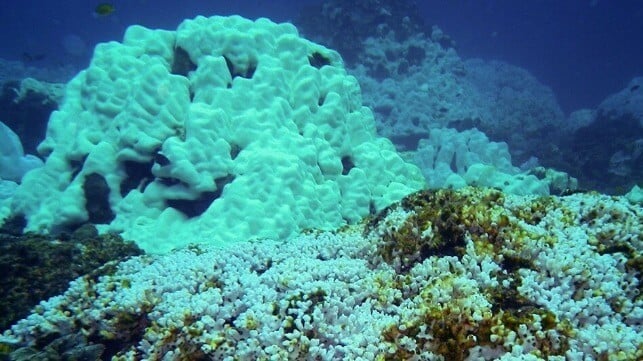Unprecedented Bleaching Event Affects 84 Percent of World's Corals

One year after the official declaration of the fourth global coral bleaching event, NOAA and the International Coral Reef Initiative (ICRI) have updated the initial impact of the catastrophe. From January 2023 to March 2025, the bleaching event has impacted 84 percent of the world’s reefs, with 82 countries and territories reporting damage.
As sea surface temperatures continue to rise, bleaching-level heat stress has been extensively reported across the Atlantic, Pacific and Indian Ocean basins. Bleaching occurs when corals lose their colorful photosynthetic algae (Zooxanthellae), revealing the white calcium carbonate skeleton. When this occurs, the corals are left without their primary energy source, which could lead to death unless temperatures drop. This time, though, scientists are concerned that bleaching will simply be a state of being going forward.
"We just may never see the heat stress that causes bleaching dropping below the threshold that triggers a global event. So this may be the last one," marine scientist and former NOAA Coral Reef Watch coordinator Dr. Mark Eakin told PBS.
The first global coral bleaching event was declared in 1998, with 21 percent of reefs experiencing bleaching-level heat stress. This rose to 37 percent in the second event in 2010 and 68 percent during the third event (2014-2017).
Scientists have called the fourth event unprecedented, starting with some bleaching episodes from May 2024. This has seen a widely-used bleaching prediction platform adding three new levels (Level 3-5) to its Bleaching Alert Scale, which indicates heightened risk of mass coral mortality. The previous highest level, Level 2, indicates risk of mortality to heat sensitive corals. The new level now, Level 5, indicates the risk of over 80 percent of all corals on a reef dying due to prolonged bleaching.
The fourth bleaching event is happening at a time that the global average temperature is rising. NASA confirmed 2024 as the warmest year on record. The average surface temperature in 2024 was 1.28 degrees Celsius above NASA’s 20th-century baseline (1951-1980), topping the record set in 2023. This contributed to record-breaking ocean temperatures, and triple the previous record number of marine heatwaves around the world.
“The fact this most recent, global-scale coral bleaching is ongoing, takes the world’s reefs into uncharted waters,” said Dr. Britta Schaffelke, Coordinator of the Global Coral Reef Monitoring Network (GCRMN). “In the past, many coral reefs around the world were able to recover from severe events like bleaching and storms. We need to continue to observe and measure if and how reefs will recover and change, to help inform the combination of conservation measures most suited for a particular reef.”
